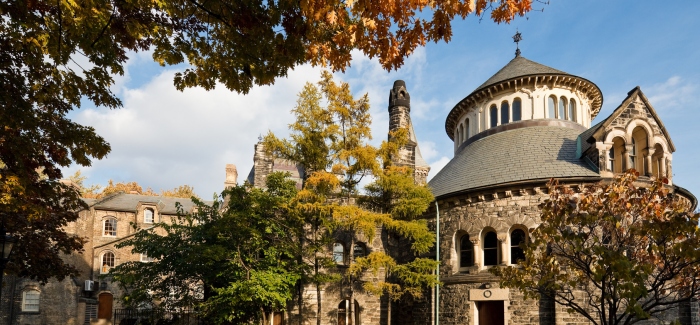Ranking ahead of Yale University in the QS World University Rankings® 2018, Princeton University joins Harvard University as one of the top two US Ivy League schools. Both are ranked within the overall top 15 universities globally, and both excel across the board of academic subjects, making choosing between the two a tricky (but enviable) task to face. Here’s our guide to Princeton vs Harvard, taking in the latest data from the rankings, as well as information about location, student community, fees and financial aid.
This year’s top Ivy League schools
In the 2018 edition of the QS World University Rankings, Harvard University remains the Ivy League’s frontrunner, ranked third in the world, while Princeton is the group’s second highest-ranked representative at 13th, ahead of Yale at 16th (which we compared to Harvard here).
So, if Princeton and Harvard are the best of the best, which one should you choose?
|
|
Princeton University |
Harvard University |
|
QS World University Rankings® 2018 |
Ranked ninth in the world by academics and 33rd by employers Stronger than Harvard for research citations |
Ranked third in the world overall in 2018 Ranked first in the world by academics and third by employers Stronger than Princeton for international students and faculty-student ratio |
|
Subject strengths* |
Ranked seventh in the world for arts & humanities 37th for engineering & technology 101st for life sciences & medicine 13th for natural sciences Joint 18th for social sciences & management |
Ranked third in the world for arts & humanities 13th for engineering & technology
First for social sciences & management |
|
Location |
Princeton, New Jersey Also in the northeast, just southwest of the state of New York. |
Cambridge, Massachusetts On the northeast coast of the US, north of Boston. |
|
Student community |
About 8,181 students, of which 2,781 are postgraduates 1,831 students are international (22%), the majority at graduate level. |
About 22,000 students, of which 15,250 are postgraduates |
|
Tuition fees & financial aid |
Undergraduate student fees for 2017-18 are $47,140. 60% of undergraduates receive need-based aid (averaging $48,000). Need-blind admission for all |
Undergraduate student fees for 2017-18 are $44,990. 55% of undergraduates receive need-based aid.
|
*Based on the broad subject areas in the QS World University Rankings by Subject 2017.
QS World University Rankings® 2018
Clearly, Harvard University and Princeton University are both among the world’s strongest performers in the international university rankings, claiming strong scores in all of the performance indicators (more information about these can be found here). At this elite level, there’s very little difference between institutions, but nonetheless a closer look at the rankings data might throw some light on the fields in which each of these top Ivy League schools particularly excels.
Helped by its long-standing prestige, Harvard University is ranked an impressive first in the world for its academic reputation (based on QS’s global survey of academics) and third in the world for its reputation among employers (based on QS’s global survey of employers). Princeton on the other hand receives a rank of 33rd for employer reputation and 9th for academic reputation, suggesting a significant gap between the two universities.
Princeton does have the advantage over Harvard in its number of research citations per faculty member, a ranking indicator for which Harvard comes ninth in the world, while Princeton is fifth. However, Harvard is ahead of Princeton in its ratio of academic staff members to students, placing 38th while Princeton is a lowly 163rd.
The final two indicators assess proportions of international students and international faculty members, aiming to measure the levels of international diversity at each university. Here, both Ivy League leaders place a little lower than elsewhere. Harvard places 103rd in the world for international faculty and 165th for international students, while Princeton is 229th for faculty and 188th for students. In global terms, both are still pretty international places to work and study – but this does remain an area in which both top Ivy League schools have space for improvement.
Subject strengths
Taking a look at the QS World University Rankings by Subject provides some more detailed insights into the individual subjects for which Harvard and Princeton each school is best known.
In 2017, Harvard University ranked as the world leader in 14 different subjects. Although Princeton isn’t considered the best in the world for any particular subject, it’s featured in the top 10 for 10 different subjects.
The table below lets you see how the two schools directly compare for each subject. If no rank is given, it’s highly likely the subject isn’t available at that particular university.
|
Harvard and Princeton in the QS World University Rankings by Subject 2017 |
||
|
|
Harvard University |
Princeton University |
|
Accounting & finance |
1st |
22nd |
|
Anthropology |
1st |
24th |
|
Archaeology |
5th |
101-150 |
|
Architecture |
7th |
Joint 29th |
|
Art & design |
-- |
45th |
|
Biological sciences |
1st |
17th |
|
Business & management |
1st |
51-100 |
|
Chemistry |
5th |
24th |
|
Computer science & information systems |
6th |
8th |
|
Dentistry |
5th |
-- |
|
Development studies |
2nd |
27th |
|
Earth & marine sciences |
2nd |
16th |
|
Economics |
2nd |
6th |
|
Education & training |
2nd |
-- |
|
Engineering (chemical) |
-- |
12th |
|
Engineering (civil) |
13th |
=2nd |
|
Engineering (electrical) |
8th |
Joint 27th |
|
Engineering (mechanical) |
Joint 4th |
34th |
|
English language & literature |
3rd |
8th |
|
Environmental sciences |
Joint 4th |
Joint 29th |
|
History |
1st |
8th |
|
Law |
1st |
-- |
|
Linguistics |
2nd |
101-150 |
|
Materials science |
5th |
51-100 |
|
Mathematics |
2nd |
7th |
|
Medicine |
1st |
-- |
|
Modern languages |
1st |
15th |
|
Performing arts |
11th |
32nd |
|
Pharmacy |
1st |
-- |
|
Philosophy |
5th |
7th |
|
Physics & astronomy |
2nd |
8th |
|
Politics |
1st |
8th |
|
Psychology |
1st |
16th |
|
Social policy & administration |
1st |
38th |
|
Sociology |
1st |
10th |
|
Statistics |
1st |
Joint 17th |
|
Theology, divinity & religious studies |
1st |
Joint 9th |
Location
Harvard can be found in the university town of Cambridge, Massachusetts, just to the north of the city of Boston. Named after the University of Cambridge in the UK, Cambridge, MA, is also home to the world’s current number one university, the Massachusetts Institute of Technology (MIT). Unsurprisingly for a town with two prominent universities in such close proximity, the city has a longstanding history of being an academic hub, with a student-centered community.
With river banks lined with trees, historical architecture and a thriving arts and culture scene, Cambridge is, in many ways, the archetypal student location. For those who want a bit more of a cosmopolitan experience, it’s an easy trip to neighboring Boston, one of the leading urban centers in the US.
Traveling southwest from Massachusetts, through the states of Connecticut and New York, down through Manhattan and the Bronx, you come to the state of New Jersey, where Princeton University is located, in the town from which it takes its name.
Much like Cambridge, MA, Princeton very much has the feel of being a “college town”, with its student population playing a key part in local life and culture. The college campus itself, which features architecture from the 18th century onwards and the manmade Lake Carnegie, has been listed as one of the most attractive among US universities.
Student community
Harvard University, significantly larger than Princeton, has a total student enrollment of 22,000, of which 15,250 are postgraduate students. Princeton claims a total enrolment of 8,181, of which 2,781 are postgraduates. These large numbers of postgraduates, making up two thirds of enrolment at Harvard and over one quarter of enrolments at Princeton, reflect the strong focus on research at each school.
Though (as mentioned above) international diversity is not the strongest indicator for either institution, both offer reasonably high proportions of overseas students: in both cases, around 22% of all students are international, with the majority of Princeton’s international students studying at graduate level.
Tuition fees
As is the case for US universities more widely, tuition fees at the top Ivy League schools are among the highest in the world. However, you certainly shouldn’t let this prevent you from considering either school, as both schools operate a “need blind” admission policy – meaning financial aid is always available for those who gain an offer of a place.
At Harvard, undergraduate fees currently stand at US$44,990 annually (2017-18) with additional costs for accommodation, travel and personal expenses bringing this figure up to an overall yearly expenditure of between $69,600 and $73,600. At Princeton, annual tuition fees are higher, at $47,140 (2017-18), with accommodation, travel and personal costs bringing the yearly spend to approximately $67,100. Be aware that, for both schools, this latter figure depends on how frugal your lifestyle is.
Other costs you may have to pay include the fee for health insurance if you don’t already have it. At Harvard, the health insurance plan is $3,130, while at Princeton it’s $1,800.
Graduate fees are typically more expensive wherever you study, and also tend to fluctuate significantly depending on the field of study. At Harvard’s Graduate School of Arts and Sciences, tuition fees stand at $43,296 (2016-17 figures) with an advised additional living expenses budget of at least $37,320 for 10 months. Princeton charges regular graduate tuition fees of $45,320 per year with additional approximate living expenses of $24,500 per 10 months.
If you’re considering studying medicine or business, however, costs will be higher still. At Harvard’s Medical School (for graduate students only) fees stand at $58,050 (2016-17 figures), while at Harvard Business School an MBA program will cost $72,000, with a total recommended annual budget of $106,800 (2017-18 figures).
Financial aid
If you’ve read the last passage with a pained expression on your face, then help is at hand. You’ll be pleased to hear that, like most of the Ivy League schools, Harvard and Princeton both offer generous financial aid programs. As many as 60% of undergraduate students receive need-based financial aid at Princeton, while the figure at Harvard is 55%.
Harvard offers payment of full tuition for students of families earning less than US$65,000 annually, with more than 20% of student’s families paying nothing. At Princeton, the average financial aid grant for a student admitted for the class of 2020 was $48,000.
Both are among the five US universities to run a need-blind policy for all undergraduate students, both international and domestic. This means a pledge to admit all students based solely on merit and nothing else, even if you’re unable to pay any of the fees. If you then accept the offer, each school will contribute as much as is needed for you to attend their program.
And what about graduate students? Yes, both universities offer funds to graduates too, often in the form of grants, loans, fellowships and scholarships, as well as paid employment. The amount offered is dependent on several factors, including level of study, program and financial situation – for information on exactly how much you can expect to pay, visit Harvard or Princeton’s graduate school website.
Find out more about studying in the US with our complete guide, which includes advice on applications, visas, costs, funding and more.














